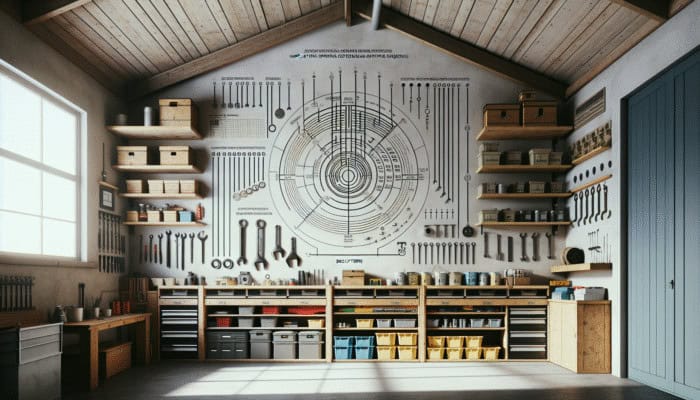Master the Art of Sorting and Categorising Your Shed Items
Assessing Usable and Non-Usable Items Effectively

Techniques for Clearing Sheds in UK Homes: A successful shed clearing commences with a thorough evaluation of your belongings. Equip yourself with resolve and a discerning eye as you delve into the depths of your shed. As you navigate through the disarray, categorise your items into three clear groups: those that can be reused, those that are suitable for recycling, and those that need to be disposed of. This sorting procedure not only simplifies your efforts but also instils a sense of purpose as you uncover potential hidden treasures amid the chaos. By taking this first step, you lay the groundwork for a more organised and purposeful space.
Evaluate each item’s condition meticulously. Tools that have served you well may still possess ample life left in them, while any broken or rusted items should be earmarked for disposal. Household belongings that you no longer utilise but remain in good condition can often find new homes through local charities or community organisations. By pinpointing what is usable, you not only free up valuable space in your shed but also contribute positively to the environment by significantly reducing waste generated from discarded items.
Engaging in this systematic sorting process not only clarifies your current needs but also helps you envision how to optimise your shed space in the future. Items you decide to retain should hold a clear purpose in your life—be it gardening tools, seasonal decorations, or other essentials. This careful evaluation lays the foundation for a more organised and functional shed moving forward, ensuring that every item serves a valuable role in your daily activities.
Transform Your Organisation with Effective Labelling
In a home shed, maintaining organisation is crucial for fostering a clutter-free environment. One of the most effective strategies for achieving this is through the systematic use of labels. Whether you opt to label boxes, shelves, or even individual items, implementing a structured labelling system can revolutionise your shed, transforming it from a chaotic storage area into a well-ordered sanctuary.
Labels act as visual cues, guiding you to precisely where each item is stored. Invest in a label maker or utilise masking tape and a permanent marker to create clear, legible labels. For instance, if you have a box of gardening tools, clearly label it as such. If there are seasonal decorations, ensure those are identified as well. This practice streamlines the process of locating items and helps maintain order over time. When each item has a designated spot, it becomes significantly easier to return them after use, effectively preventing future clutter from reaccumulating.
Additionally, consider incorporating colour-coded labels for various categories. For example, you might use green for gardening items, blue for tools, and red for seasonal decorations. This visual enhancement to your organisation system not only aids in quickly locating specific items but also elevates the overall aesthetic of your shed. With your labelling system in place, the shed transitions from a stressful storage area into an inviting, well-organised space, encouraging you to utilise it more frequently and effectively.
Create an Efficient Sorting Station for Decluttering
Establishing a dedicated sorting station within your shed can significantly enhance your decluttering efforts. This station serves as your command centre, where all sorting and categorising activities take place. Opt for an area that is spacious enough to accommodate multiple boxes or bins, allowing you to sort through your items efficiently. Consider placing a sturdy table or a large piece of cardboard on the floor to create a stable surface on which to display your items clearly and effectively.
As you gather items for sorting, transport them to your sorting station. This focused area enables you to concentrate on the task at hand without the distractions posed by surrounding clutter. Begin by placing items into predefined categories, keeping similar items grouped. This not only simplifies the sorting process but also allows you to quickly see what you own, helping to identify duplicates or items that no longer serve a purpose in your life.
Integrating a sorting station into your shed-clearing strategy not only boosts efficiency but also promotes a systematic approach to decluttering. It transforms what can often feel like an overwhelming task into a structured and achievable goal. By creating a designated space for sorting, you’ll find that the entire process becomes less daunting, allowing you to relish the satisfaction of reclaiming and revitalising your shed.
Effective Decluttering Techniques for a Tidy Shed

Streamline Your Decluttering with the Four-Box Method
The Four-Box Method is a powerful technique designed to significantly simplify the decluttering process. By employing four distinct boxes labelled ‘Keep’, ‘Donate’, ‘Sell’, and ‘Bin’, you can make swift, informed decisions about each item as you encounter it. This method accelerates the sorting process, ensuring you won’t be left second-guessing whether or not to keep something; you’ll have a clear direction from the outset.
When you come across an item, ask yourself whether it serves a purpose or brings you joy. If it does, place it in the ‘Keep’ box. Items that you believe could benefit someone else should go into the ‘Donate’ box, while those in reasonably good condition that you no longer need can be placed in the ‘Sell’ box. Finally, anything that is broken, worn beyond use, or simply unwanted should find its way into the ‘Bin’. This clear-cut system facilitates decision-making, allowing you to focus on action rather than deliberation.
This technique not only clarifies your decisions but also enhances the overall decluttering experience. By having a structured system in place, you’ll discover that you spend less time deliberating and more time taking decisive action. The Four-Box Method fosters a decisive mindset, empowering you to conquer the clutter with ease. Beyond merely sorting, this approach invites you to reflect on your relationship with your possessions, encouraging a more mindful perspective regarding what you choose to keep.
Maintain Clutter-Free Spaces with the One-In-One-Out Rule
Implementing the One-In-One-Out Rule can dramatically transform your approach to maintaining a clutter-free shed. This straightforward rule dictates that for every new item you bring into your shed, you must remove an existing item. This philosophy not only prevents additional clutter but also promotes conscious consumption, guiding you to make informed choices about your belongings.
When contemplating a new addition to your shed, evaluate whether it genuinely serves a purpose that an existing item cannot already fulfil. This encourages a mindset of intentionality, prompting you to think critically about your purchases and reducing the likelihood of impulse buys. Moreover, this rule fosters a sense of responsibility towards maintaining your space, creating a harmonious balance between acquiring and discarding items.
By adhering to this standard for the items in your shed, you significantly reduce the likelihood of clutter accumulating in the future. As you maintain your collection of tools, supplies, and other items at a manageable level, your shed evolves into a more pleasant and functional space, free from the overwhelm that often accompanies excessive possessions. This approach not only enhances the organisation but also cultivates an overall sense of clarity within your home.
Establish Regular Decluttering Schedules for Lasting Organisation

Establishing a regular decluttering schedule is a vital technique for maintaining an organised shed. Rather than waiting for clutter to reach unmanageable levels, setting aside dedicated time —whether monthly or quarterly —to review your space allows you to stay ahead of any potential mess. This proactive approach ensures that your shed remains a functional and tidy storage area, rather than a dumping ground for unused items.
When scheduling these decluttering sessions, treat them as non-negotiable appointments with yourself. This fosters a consistent approach to organisation, making it an integral part of your routine rather than a sporadic chore. During each session, walk through your shed, evaluating items and determining whether they still serve a purpose in your life.
By creating a habit around decluttering, you not only manage the current state of your shed more effectively but also cultivate a mindset that values simplicity and organisation. This regular maintenance allows you to enjoy your space more fully, fostering a greater sense of peace and functionality. You’ll find that these scheduled check-ins empower you to optimise your storage, ensuring that everything is in its rightful place and easily accessible.
Transform Your Space with the KonMari Method
The KonMari Method, popularised by Marie Kondo, offers a unique and emotionally engaging approach to decluttering that resonates deeply with many homeowners. Her philosophy centres on keeping only items that ‘spark joy’, encouraging individuals to create a space filled with belongings that genuinely enrich their lives. Applying this technique to your shed can lead to a more meaningful and fulfilling storage experience.
Begin by gathering all items from your shed and sorting them by category, rather than by location. This category-focused approach allows you to grasp the entirety of your belongings. As you hold each item, ask yourself whether it sparks joy or serves a vital purpose in your life. If it does not, consider thanking it for its service and letting it go. This emotional connection to your possessions fosters a more mindful approach to decluttering, making it easier to part with items that no longer fit your lifestyle.
Adopting the KonMari Method not only clears physical clutter but also invites a sense of clarity and purpose into your shed. By surrounding yourself with items that genuinely bring you joy, you transform your shed into a space of inspiration and creativity. This method encourages you to be deliberate about your possessions, ensuring that each item has its place and serves a meaningful role in your life.
Explore Responsible Disposal and Recycling Options
Maximise Sustainability with Local Recycling Centres
Utilising local recycling centres is a fundamental aspect of responsible disposal when clearing out your shed. Many items, from old paint cans to broken tools, can contribute to environmental issues if not disposed of properly. Familiarising yourself with the recycling facilities in your area ensures that you adopt the most sustainable approach while decluttering your shed.
Most councils across the UK have designated recycling centres that accept a diverse range of materials. Research the items accepted at your local facility and plan your clearing accordingly. For example, many centres will accept wood, metal, and certain plastics, allowing you to dispose of these materials in an eco-friendly manner. This not only minimises landfill waste but also supports the recycling economy, contributing to a more sustainable community.
As you gather items for disposal, take the time to separate recyclable materials from those that cannot be reused. This simple act of organisation can significantly impact your overall environmental footprint. Engaging with local recycling initiatives also presents an opportunity to educate yourself and others about the importance of responsible disposal, thereby fostering a more environmentally conscious mindset throughout your community.
Ensure Safety with Proper Hazardous Waste Disposal
Proper disposal of hazardous materials is paramount for safety and compliance with regulations. Items such as old paint, chemicals, or specific electronic devices can pose significant risks if not handled correctly. Many local councils offer specific collection services for hazardous waste, ensuring that these materials are processed safely and responsibly.
Begin by identifying any hazardous materials that may be lurking in your shed. Create a dedicated area to store these items until you’re prepared to dispose of them. Please consult your local council’s website or contact their waste management department for guidelines on safely handling and disposing of hazardous items. Many areas host special collection events or have designated drop-off points specifically for hazardous waste, making the process more convenient for residents.
Understanding the importance of proper disposal not only protects you and your family but also contributes positively to the well-being of your community. When hazardous materials are improperly dumped, they can contaminate soil and water sources, posing risks to public health and the environment. By following the correct disposal procedures, you play a vital role in safeguarding both your community and the planet.
Promote Community Wellbeing by Selling or Donating Usable Items
As you clear out your shed, consider the positive impact of selling or donating items that are still in good condition. Not only does this reduce waste, but it also provides an opportunity for others in your community to benefit from your unwanted belongings. Local charities, thrift shops, or community groups often welcome donations of usable items, allowing you to make a difference while decluttering.
When deciding what to donate or sell, assess the condition of each item. Items that are still functional and in decent shape can find new homes, where they may be cherished and utilised for years to come. Many charities will even arrange pick-up services for larger items, making it more convenient for you to contribute without the added hassle of transportation.
In addition to supporting your community, selling items through online marketplaces can provide a small financial return on your unwanted possessions. Platforms such as eBay, Facebook Marketplace, or local buy-and-sell groups facilitate easy connections with potential buyers. This way, you can transform your decluttering efforts into a rewarding experience, both for yourself and for others who may benefit from the items you donate.
Effective Cleaning and Maintenance Strategies
Revitalise Your Space with a Deep Clean of the Shed
Once you’ve successfully cleared out items from your shed, it’s time to focus on comprehensive deep cleaning. Dust, cobwebs, and grime can accumulate over time, creating an uninviting environment that undermines your decluttering efforts. A thorough clean not only enhances the aesthetics of your shed but also contributes to its longevity and usability.
Start by removing any remaining debris from the floor, shelves, and corners. Use a broom or vacuum to eliminate dust and cobwebs, and don’t forget to tackle the windows and doors to let in natural light. A simple solution of warm, soapy water can be used to wipe down surfaces, ensuring that any grease or dirt is removed, leaving a fresh scent in the air. Consider using a disinfectant or mildew remover if you observe any signs of mould or mildew, particularly in damp areas of the shed.
Once the cleaning is complete, take a moment to appreciate the transformation that has occurred. A clean shed not only appears better but also creates a healthier environment for storing your belongings. This revitalised space invites you to utilise it more often, encouraging you to engage in hobbies or projects that may have been hindered by clutter in the past. Establishing a routine maintenance plan can help to keep your shed looking clean and inviting, ensuring that your hard work pays off in the long term.
Inspect and Repair Any Damaged Areas Promptly
After you have cleared and cleaned your shed, it’s crucial to inspect for any damage that may have occurred over time. Conduct a thorough examination of the structure—checking the roof, walls, and flooring—to identify areas that may need repair. Addressing these issues promptly not only restores the shed’s functionality but also protects your stored items from potential damage caused by environmental elements.
Look for signs of wear, such as cracked wood, loose nails, or indications of rot. If you discover any leaks in the roof, it’s essential to seal these as soon as possible to prevent water damage. Use wood glue or screws to secure loose panels, and replace any rotting wood with treated lumber that is better suited to withstand the elements.
Taking the time to repair your shed enhances its longevity and safety. A well-maintained structure will provide years of reliable use, safeguarding your tools and equipment from damage. Regularly scheduled checks for wear and tear will ensure that your shed remains a safe and functional space for years to come, protecting your investment in both time and resources.
Implement Preventive Maintenance Tips for Longevity
To ensure your shed remains in optimal condition, implementing a routine of preventative maintenance is essential. This proactive approach helps identify potential problems before they escalate into costly repairs. Simple tasks, such as checking for leaks, treating wooden surfaces, and ensuring that locks and hinges function properly, can significantly prolong the shed’s lifespan.
Regularly inspect the roof and walls for any signs of damage or wear. Clean gutters and downspouts to ensure proper drainage, preventing water from pooling around the base. Investing in a weatherproof sealant for wooden surfaces can protect against moisture and pests, keeping your shed in good condition throughout the changing seasons.
Additionally, consider conducting seasonal checks to maintain the integrity of your shed. For instance, in autumn, clear away fallen leaves and debris that may accumulate around the foundation. During spring, check for signs of pests that may have nested during the winter months. By taking these preventative measures, you can safeguard your shed, ensuring that it remains a valuable asset for your home for many years to come.
Innovative Storage Solutions for Your Shed
Maximise Vertical Space by Utilising Shelving Units
Maximising vertical space within your shed is key to achieving an organised storage solution, and one of the most effective ways to do this is by installing shelving units. Shelves allow you to utilise the height of your shed, keeping the floor clear for larger items or facilitating easy movement. By utilising vertical space, you create a more functional environment that is both efficient and aesthetically pleasing.
When selecting shelving, consider the types of items you wish to store. Heavy-duty shelves are ideal for storing tools and equipment, while lighter shelves are suitable for smaller items, such as pots and gardening supplies. When installing, ensure the shelves are anchored securely to support the weight of the items you intend to store.
Organising your items on shelves not only improves accessibility but also enhances visibility. Clear bins or labelled containers can be utilised on shelves, ensuring that everything remains orderly and easy to find. This system encourages a habit of returning items to their designated spots, maintaining order over time. An organised shed with effective shelving can become a source of pride, transforming your storage space into a showcase for your hobbies and interests.
Streamline Storage by Implementing Storage Bins
Incorporating storage bins into your shed organisation strategy offers a simple yet effective solution for managing smaller items. Clear storage bins allow you to see contents at a glance, making it easy to locate tools, gardening supplies, and other essentials quickly. This not only enhances functionality but also contributes to a neater appearance, as bins can be stacked or arranged in a streamlined manner.
Select bins that are appropriately sized for your items—too large can lead to clutter, while too small may result in overflow. Consider investing in bins with secure lids to protect contents from dust, moisture, or pests. When using bins, label each one clearly to ensure you can quickly find what you need without having to rummage through multiple containers.
Organising your shed with storage bins encourages a systematic approach to tidiness. By grouping similar items, you create a sense of order that enhances the overall usability of your shed. This will empower you to maintain your space with ease, promoting a productive and enjoyable environment for all your projects.
Enhance Accessibility with Hanging Systems for Tools
Maximising space and keeping your tools accessible is essential for any well-organised shed. Installing hanging systems for tools is an excellent solution to achieve both organisation and efficiency. By utilising wall space for tool storage, you not only free up valuable floor space but also ensure that your tools are readily available when you need them.
Consider a pegboard system, allowing you to customise the arrangement of your tools. Hooks, holders, and shelves can be rearranged to fit your specific tools and preferences, enabling you to create a tailored storage system. For heavier tools, wall-mounted brackets or magnetic strips can provide sturdy support while keeping them easily accessible.
Having your tools displayed on the wall eliminates the frustration of searching through cluttered boxes or drawers. This visual organisation also encourages you to keep your tools in their designated spots, helping to maintain order in your shed. With everything in sight and easy to reach, you can focus on your projects without the distraction of a disorganised workspace.
Implement Safety and Security Measures
Ensure Adequate Lighting for Safety and Functionality
Proper lighting is a fundamental component of a safe and functional shed. Without adequate illumination, navigating the space can become hazardous, especially when retrieving tools or supplies in dim conditions. Ensuring your shed is well-lit not only enhances safety but also encourages you to utilise your space more frequently.
Consider installing LED strip lights or motion-sensor lights to effectively illuminate the interior. These energy-efficient options provide bright, clear light without consuming excessive energy. Don’t overlook the exterior of your shed—security lights can help deter potential intruders while also providing illumination for evening access.
By prioritising lighting in your shed, you create a welcoming environment that invites creativity and productivity. Well-lit spaces reduce the risk of accidents and improve visibility, making it easier to quickly and safely find what you need. This attention to detail promotes a positive atmosphere, encouraging you to engage fully with your shed and its contents.
Enhance Security by Installing Robust Locks
Enhancing the security of your shed is crucial to protect your tools and equipment from theft. Installing robust locks on all doors and windows is an effective first step in safeguarding your belongings. Opt for high-quality, weather-resistant locks that provide reliable security against unauthorised access.
Consider additional security measures such as padlocks, deadbolts, or even smart locks that offer keyless entry. These options not only bolster the security of your shed but also provide peace of mind, allowing you to store valuable items without constant worry about theft.
Regularly check the functionality of your locks and replace any that show signs of wear or damage. By taking these proactive steps to secure your shed, you can create a safe environment for your tools and supplies, fostering confidence in your ability to maintain and utilise your space effectively.
Conduct Regular Maintenance Checks for Ongoing Safety
Conducting regular maintenance checks is essential for ensuring the ongoing safety and security of your shed. By routinely inspecting its structure and fittings, you can identify any potential issues before they escalate into significant problems. This proactive approach not only maintains the integrity of your shed but also enhances your overall peace of mind.
During your check-ups, examine the roof, walls, and foundation for signs of damage or wear. Look for loose screws, rusted fittings, or cracks that require immediate attention. Inspect the locking mechanisms to ensure they are functioning correctly and replace any that have become compromised over time.
Establishing a routine for these maintenance checks creates a sense of responsibility, empowering you to take ownership of your space. A well-maintained shed not only protects your belongings but also serves as a welcoming space for hobbies and projects. This diligence ensures that your shed remains a reliable resource for years to come.
Frequently Asked Questions About Shed Organisation
What are the most effective techniques for clearing sheds in UK homes?
Effective techniques encompass sorting and categorising items, employing the Four-Box Method, and establishing regular decluttering schedules. These methods streamline the process and ensure that your shed maintains organisation over time, enhancing its usability.
How often should I declutter my shed for optimal organisation?
A consistent schedule of decluttering, such as monthly or quarterly, is recommended. This approach helps to manage clutter effectively and maintain a functional space throughout the year.
What should I do with hazardous materials discovered in my shed?
Hazardous materials must be disposed of properly at designated waste sites or through local council hazardous waste collection services to ensure safety and compliance with regulations.
Can I sell items from my shed instead of discarding them?
Absolutely! Selling items that are still in good condition can benefit others and significantly reduce waste. Online marketplaces and local buy-and-sell groups offer excellent platforms for this purpose.
What are some effective storage solutions for organising my shed?
Consider utilising shelving units, clear storage bins, and hanging systems for tools. These solutions optimise space and enhance accessibility within your shed, promoting efficient organisation.
How can I keep my shed clean and pest-free?
Regular cleaning and maintenance checks, sealing any gaps, and using pest deterrents can help keep your shed clean and pest-free. Ensuring good ventilation also reduces dampness, further enhancing the environment.
What are the benefits of applying the KonMari Method in my shed?
The KonMari Method encourages mindful decluttering by retaining only items that ‘spark joy. This approach not only clears clutter but also fosters a more positive and functional storage space, enhancing your overall experience.
How can I safely dispose of items I no longer need?
You can dispose of items through local recycling centres, donate usable items to charities, or follow proper disposal procedures for hazardous materials to ensure compliance with regulations.
What lighting options are most effective for my shed?
LED strip lights or motion-sensor lights provide efficient and adequate illumination. Consider adding security lights outside for added safety during evening access.
How can I secure my shed against theft or unauthorised access?
Installing robust locks, utilising padlocks or smart locks, and regularly checking the security of doors and windows will enhance the safety and security of your shed, protecting your valuable items.






